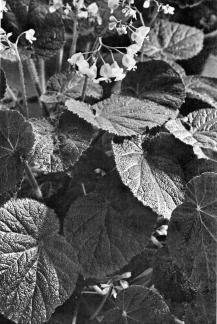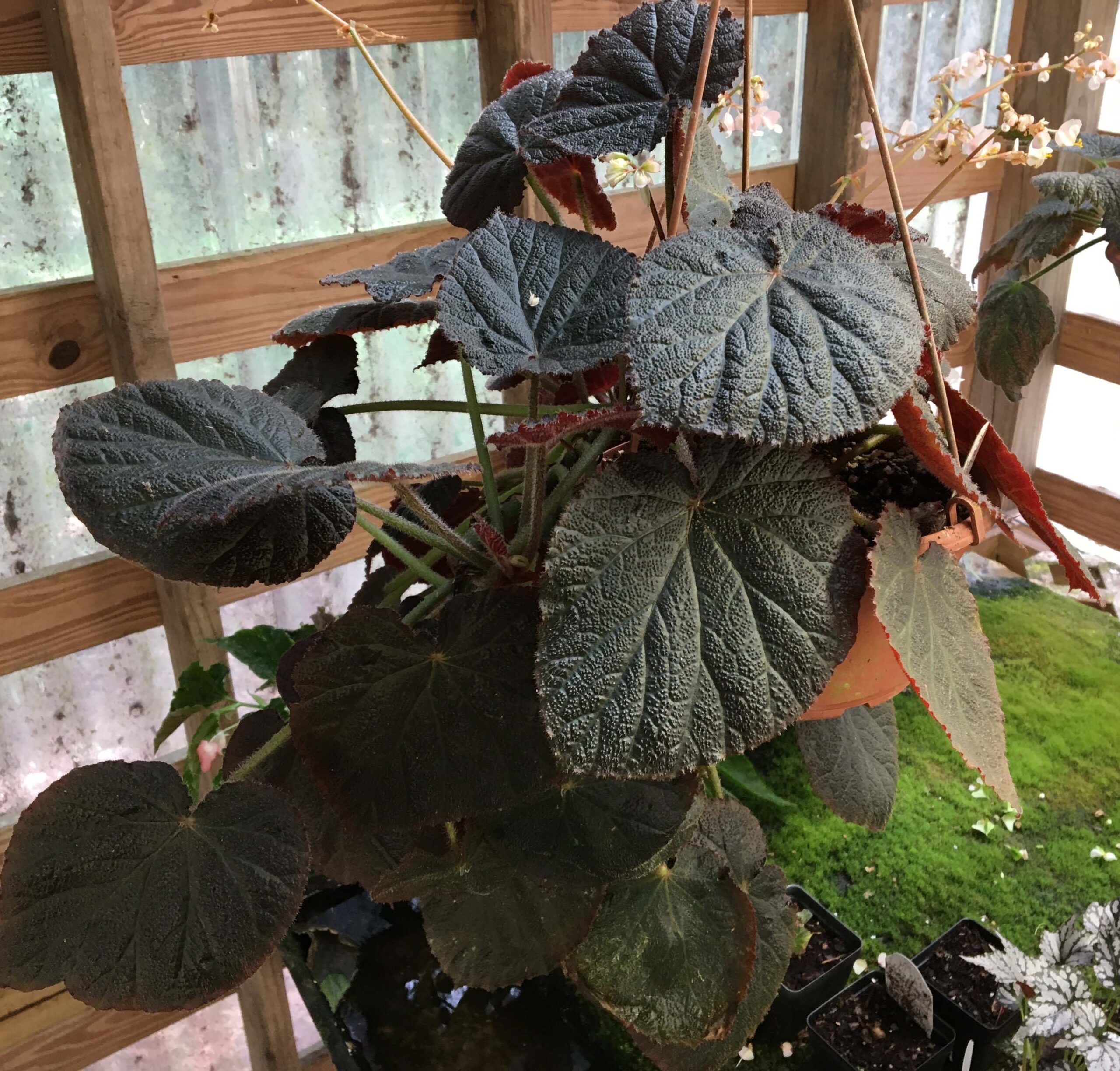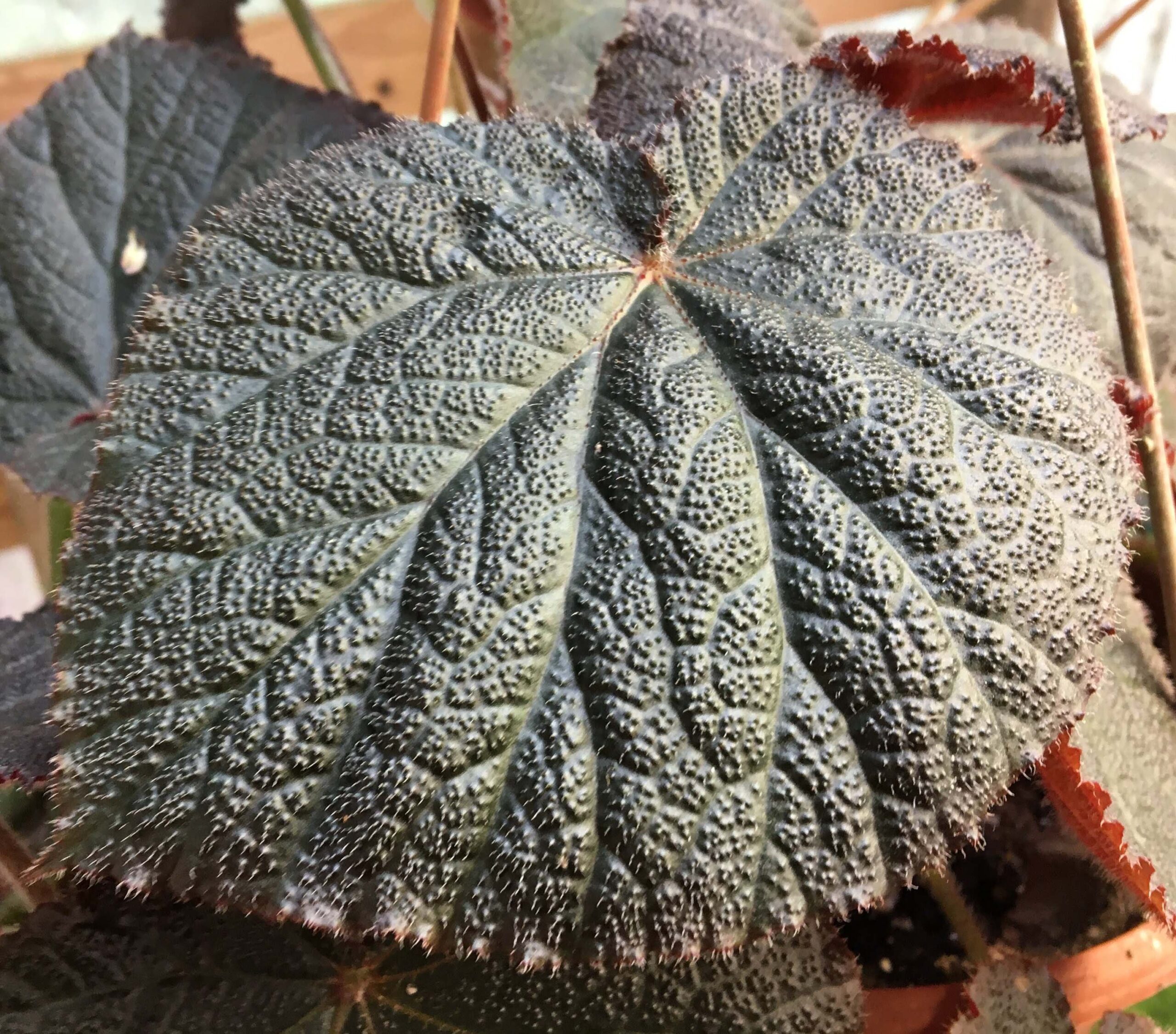Very easy to grow and most charming is B. ‘Black Raspberry’. It always catches the eye of visitors, even those who do not grow any plants at all.
Classified in the Thompson Begonia Guide as rhizomatous, medium leaved, entire-sub- entire, it was originated by Paul Lowe of Florida, and resulted from a cross of B. acetosa and B. imperialis.
The foliage is very dark, with a pebbly surface carrying minute white hairs on the surface and leaves measure 3 by 4 inches in size. Leaves are somewhat heart shaped and there is slight overlapping at the point where the stem meets the leaf. The back of the leaf is rosy red, also covered with tiny white hairs and the stem is hairy with red dots.
Almost everblooming, the pale pink flowers are held well over the handsome foliage. As this is one of my favorite plants, I grow it in the greenhouse, under fluorescent lights in the cellar, and on the sunporch where it receives bright light but very little direct sun.
It thrives in a rather heavy potting mix containing loam, peat moss, and sand as well as in a lighter mix of one part each of vermiculite and perlite to two parts of any packaged potting mix. It grows as happily in my favorite propagation mix of equal parts of vermiculite, perlite, and milled sphagnum, fed frequently with water-soluble fertilizer.
Temperatures in my light garden range from 65 degrees in the winter to 75 in the summer with humidity around 40% in winter to 60% in summer.
In the greenhouse in winter where the nighttime temperature is about 56 degrees, B. ‘Black Raspberry’ never shows any damage as do some of my difficult begonias.
The temperatures on our sunporch stay at about 70 degrees night and day in winter and go from 70 to 80 in summer. From my experience it seems evident this lovely begonia will perform well in almost any situation.
B. ‘Black Raspberry’ is propagated easily uncovered in pots or pans by leaf stem cuttings trimmed to half-dollar size , by wedges, and by rhizomes. It roots more readily in early spring at the beginning of the growing season but can be started at any time although rooting is slower when temperatures are low. Even when small, the plantlets start to throw bloom stalks.
Under the conditions where I grow my begonias, B. ‘Black Raspberry’ stays compact with overlapping leaves. Specimen plants in six-inch pots retain this characteristic as well as smaller ones which I keep root pruned and in four-inch pots.
When I started to collect begonias years ago, I found myself choosing green-leaved varieties, but after visiting Kartuz Greenhouses in Massachusetts and Logee’s in Connecticut, I became fascinated with the seemingly endless varieties of begonias with red leaves, dark blotches and patterns.
In my own collection I have many of these, some easy to grow, other more difficult.




